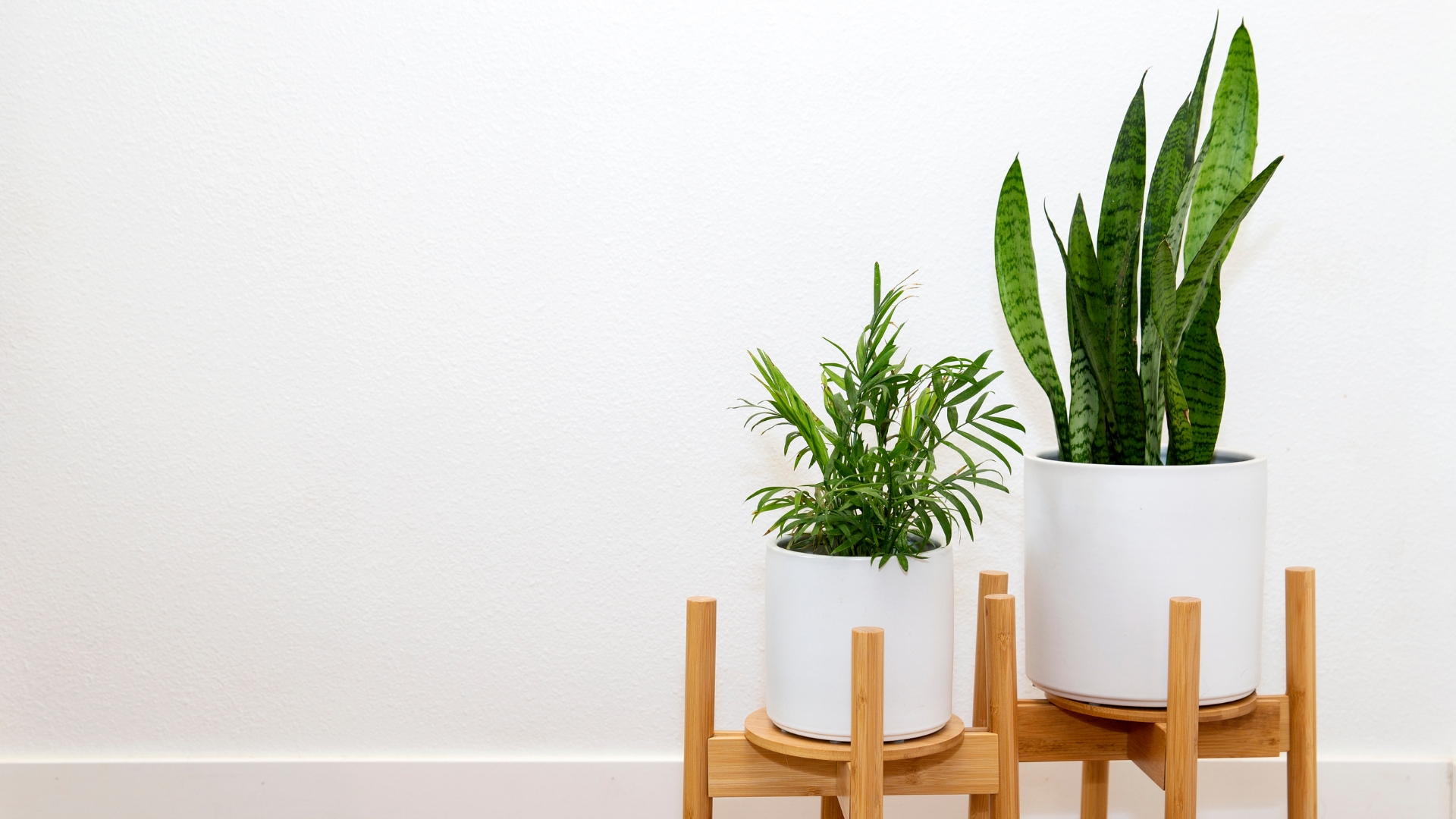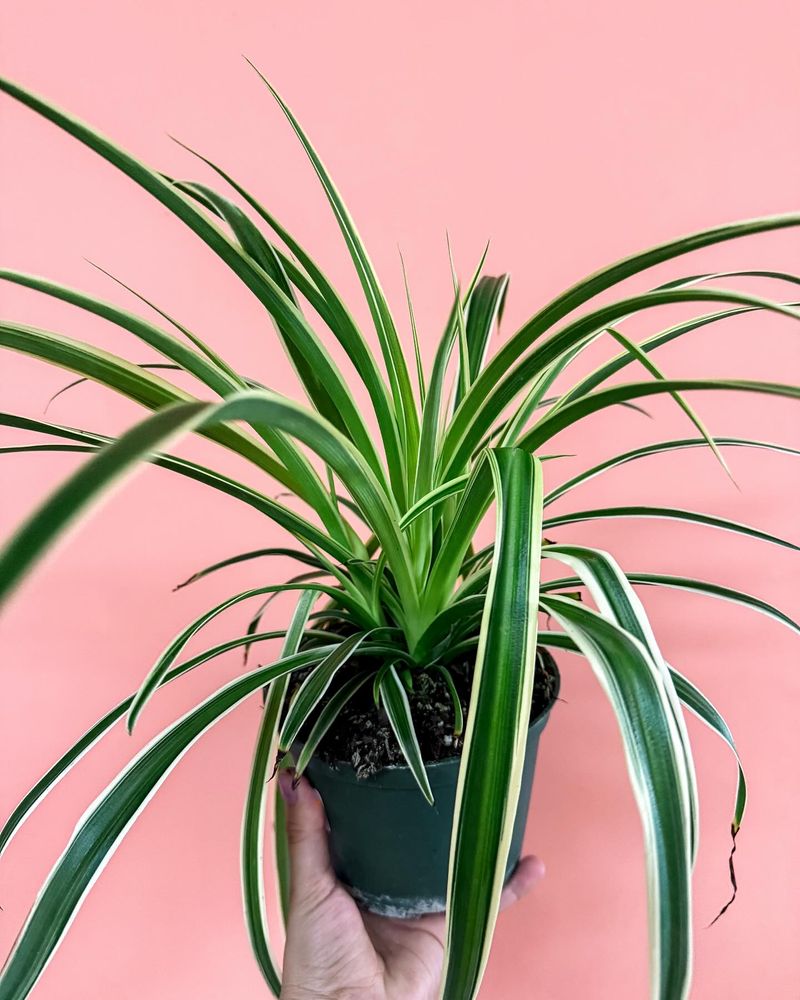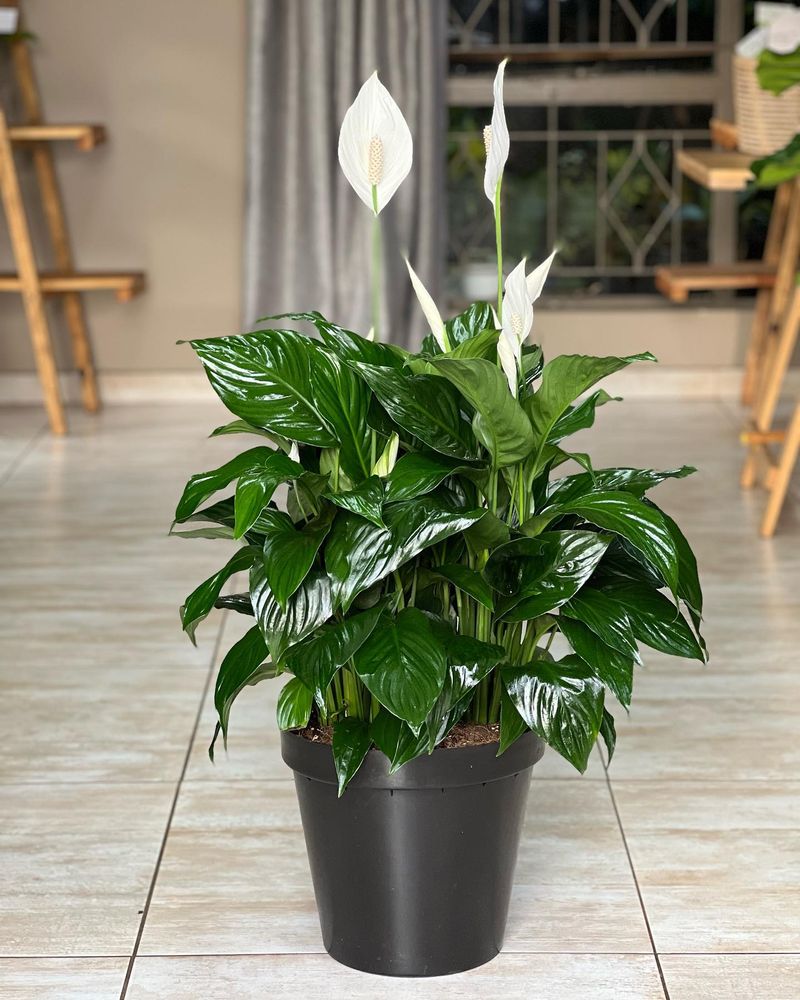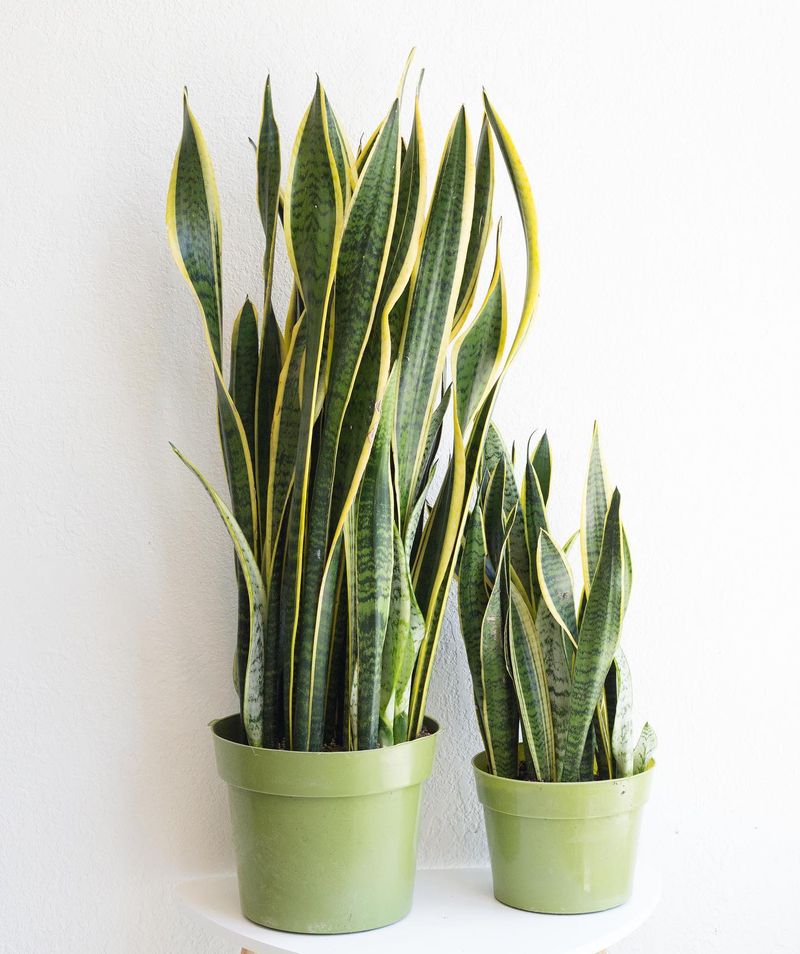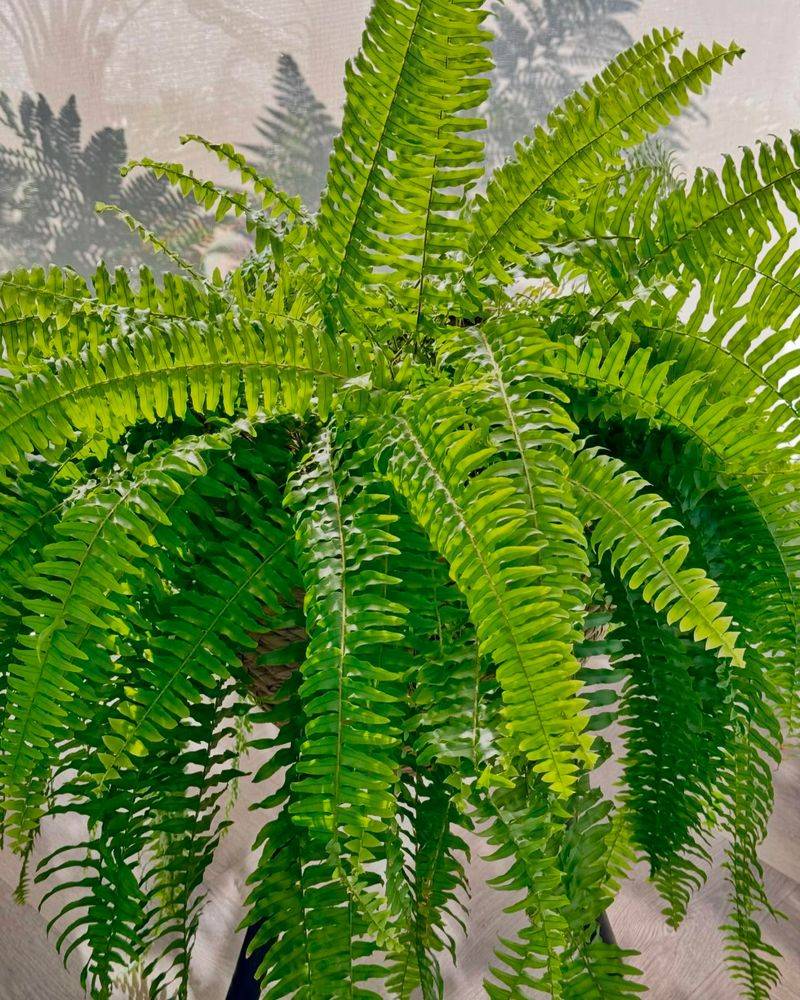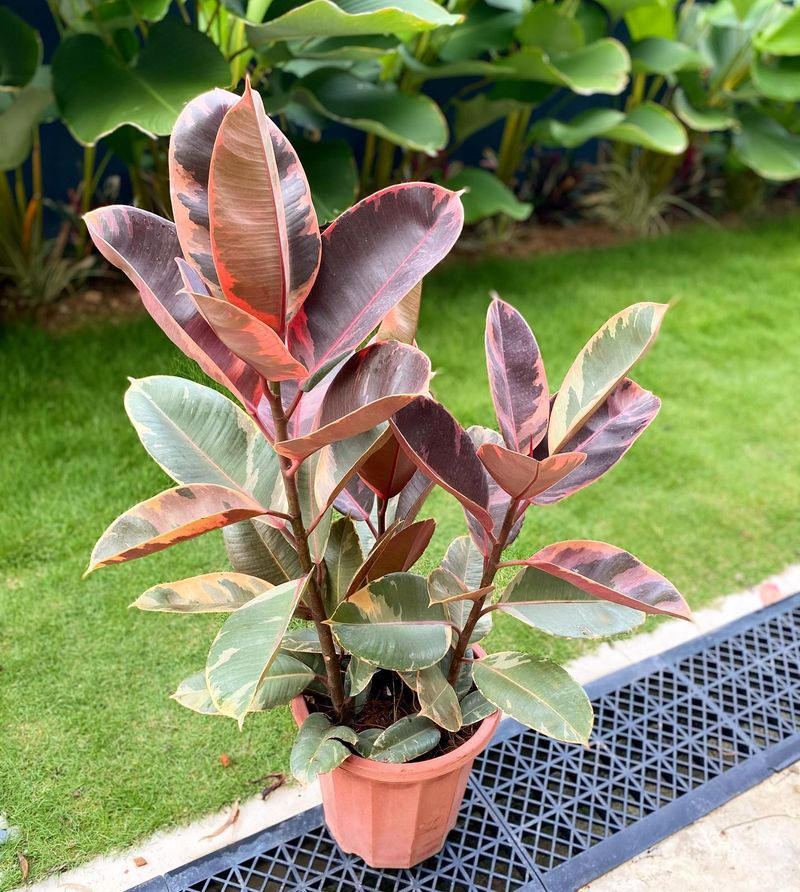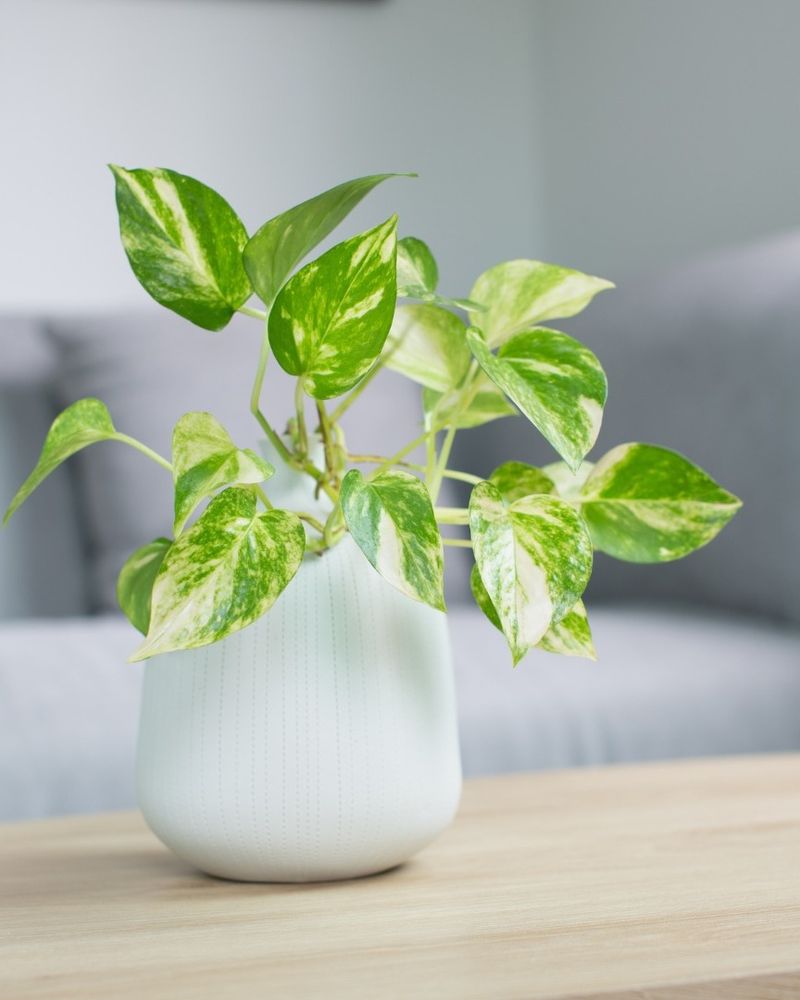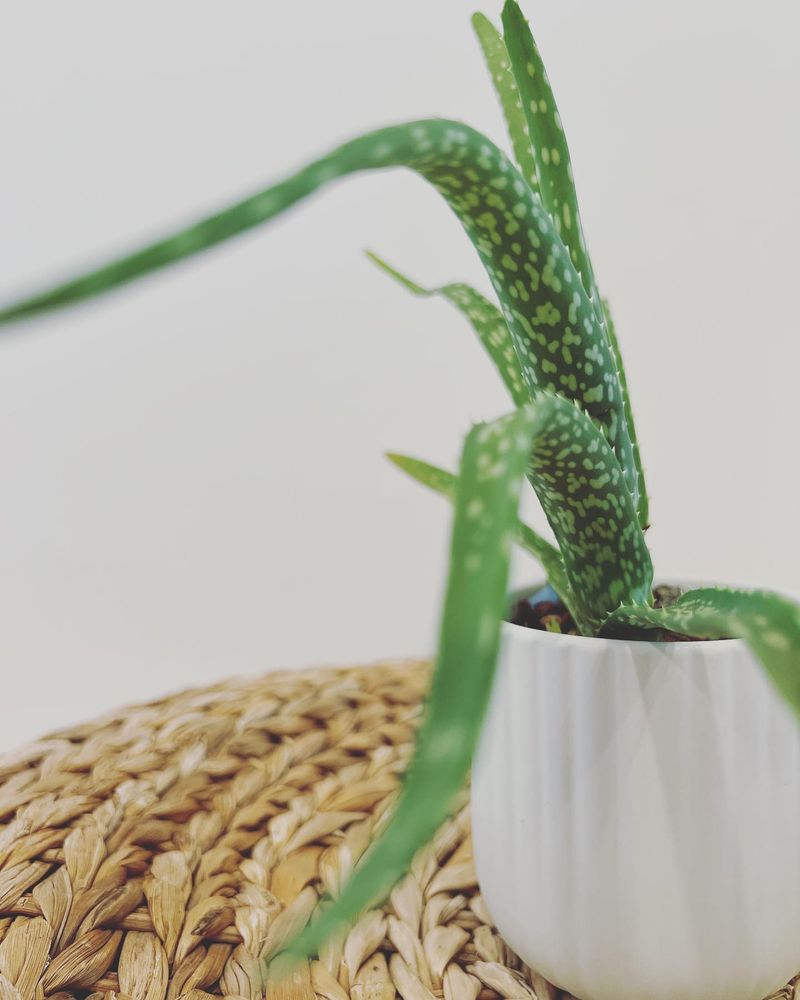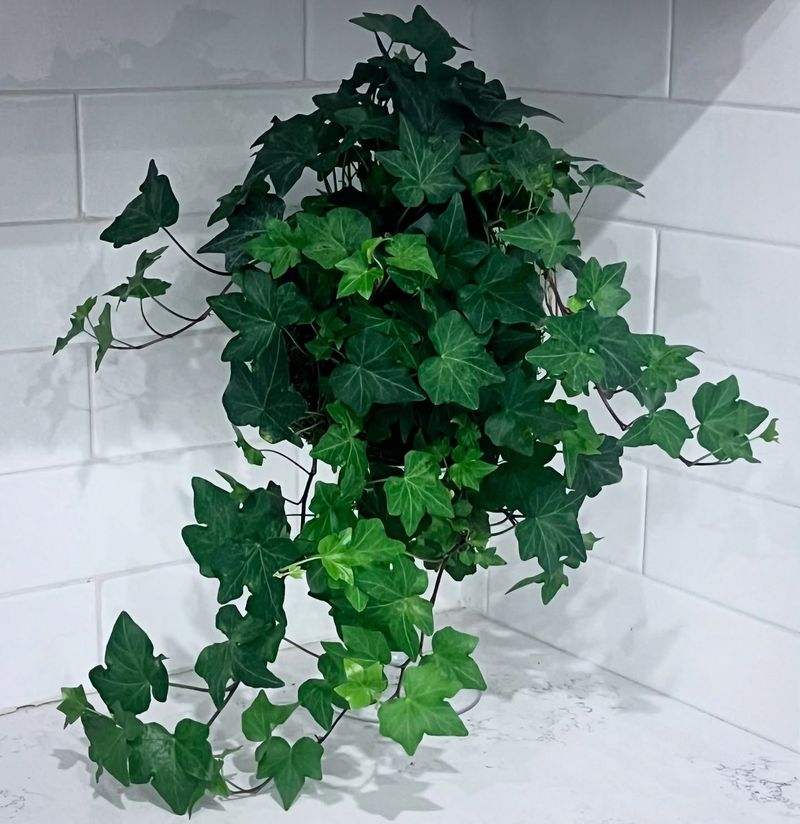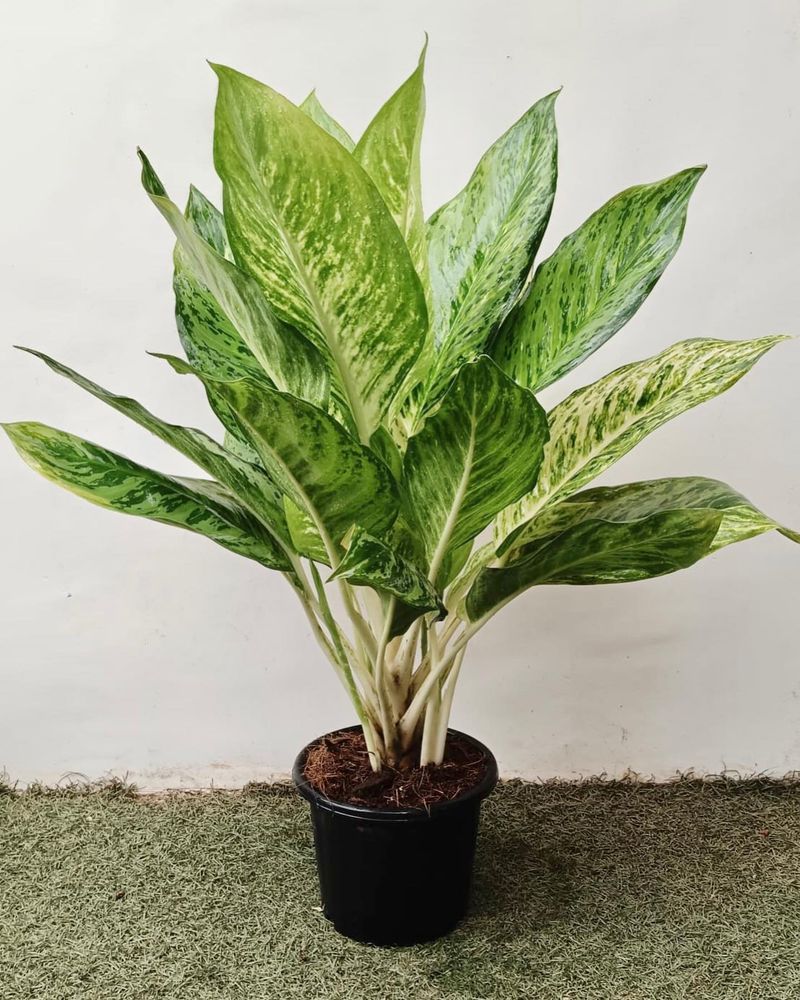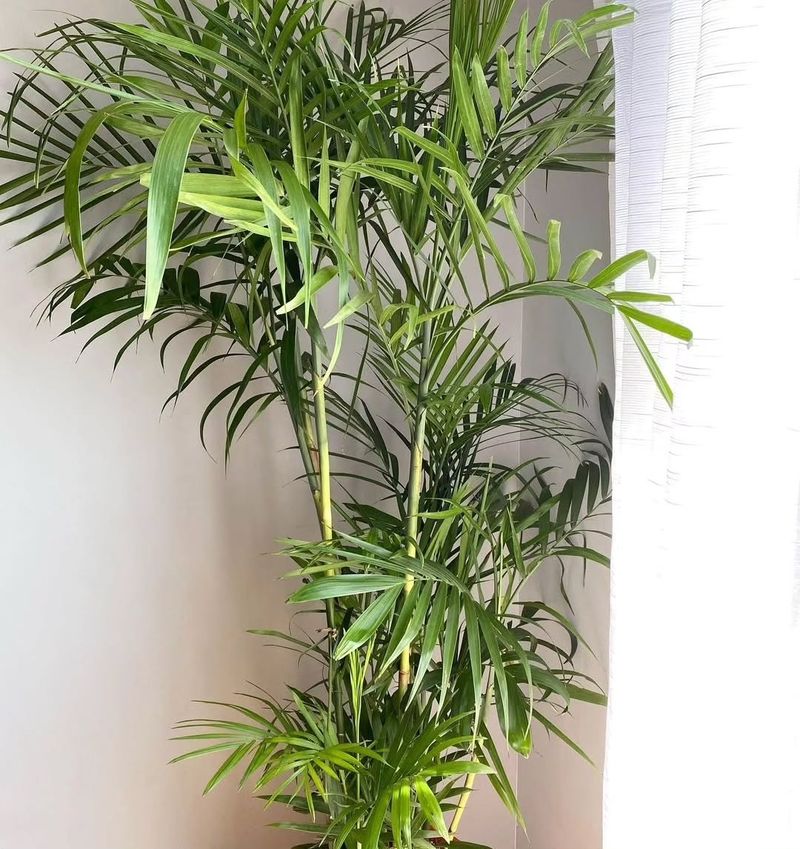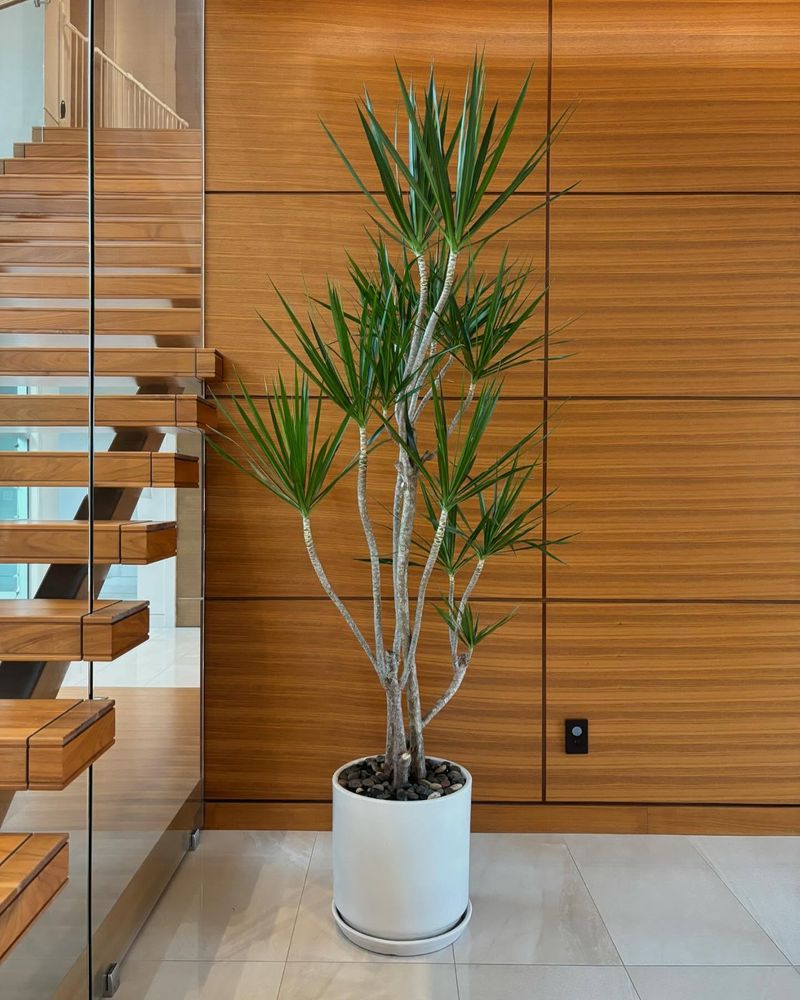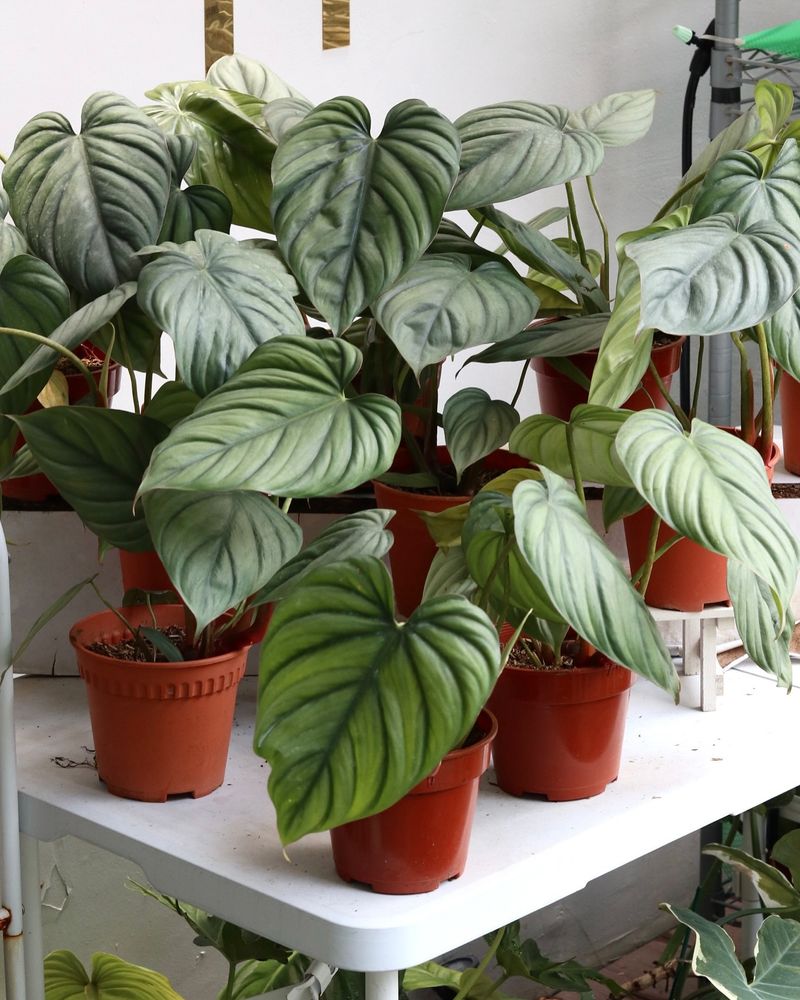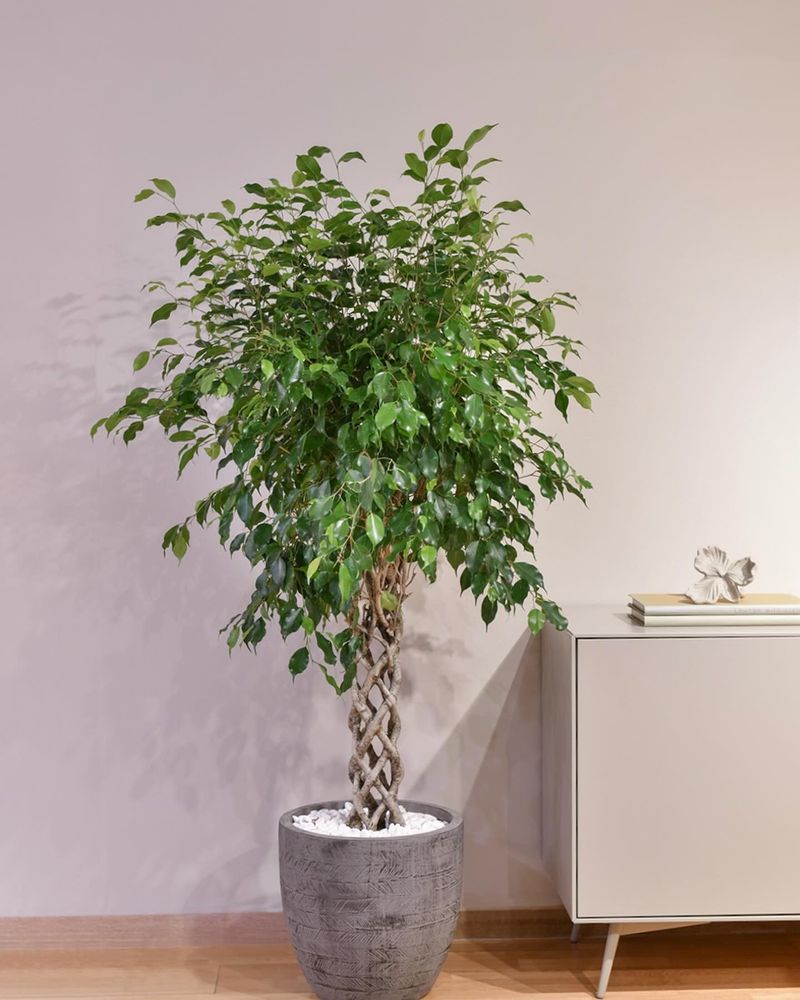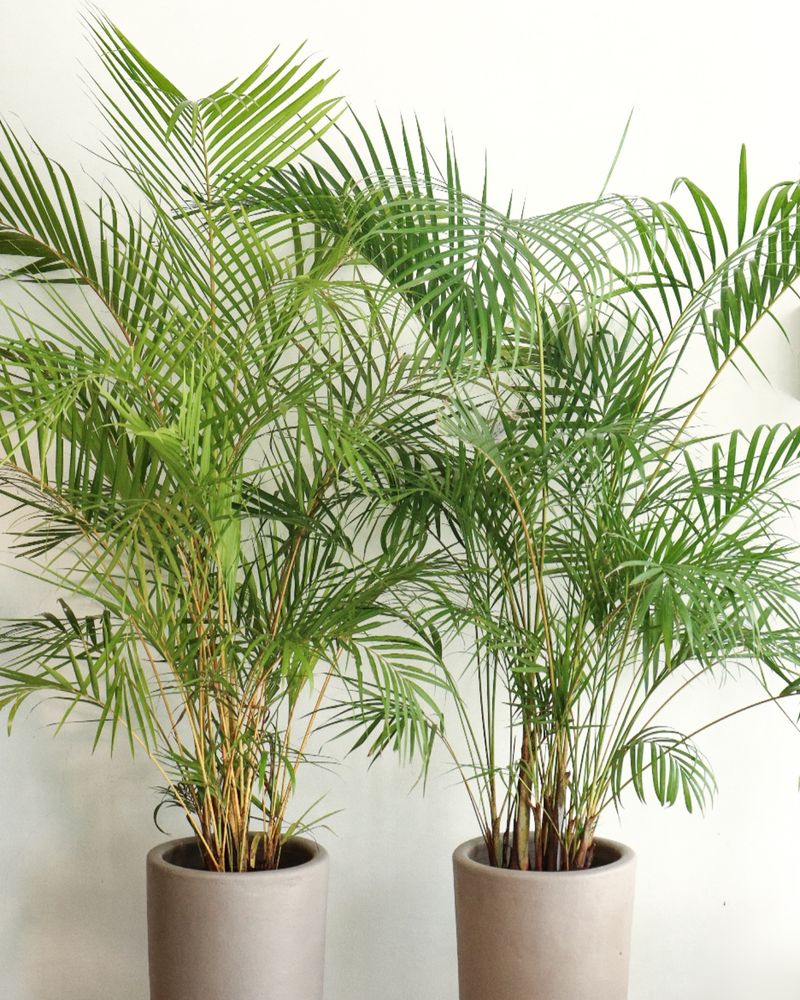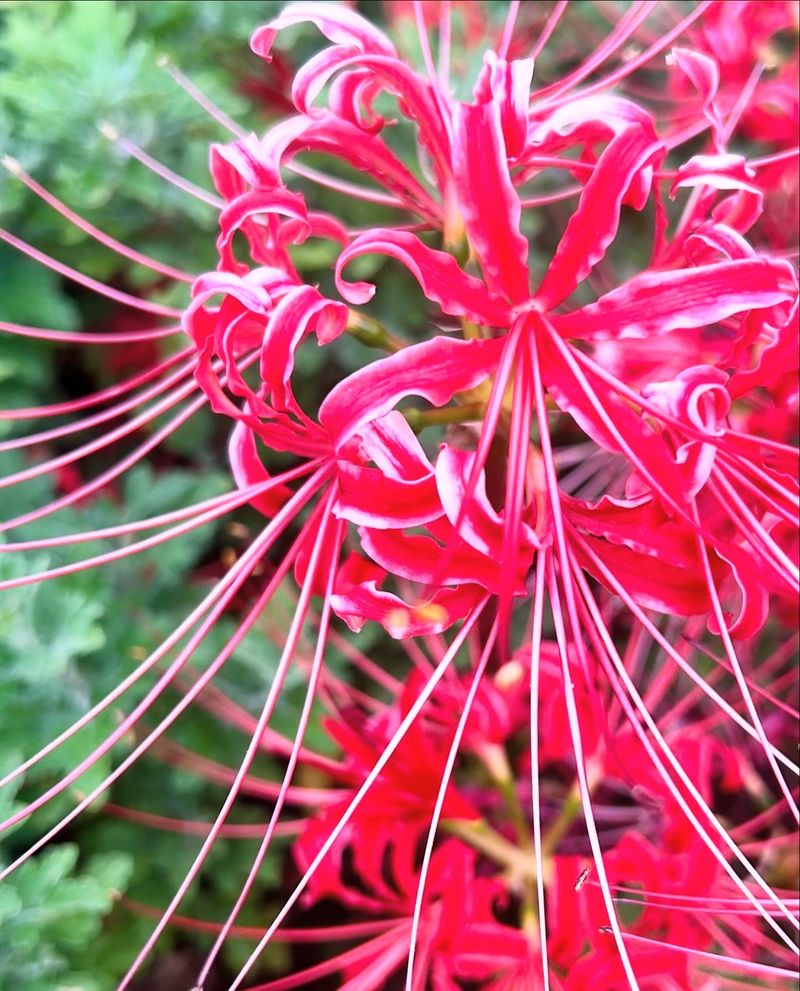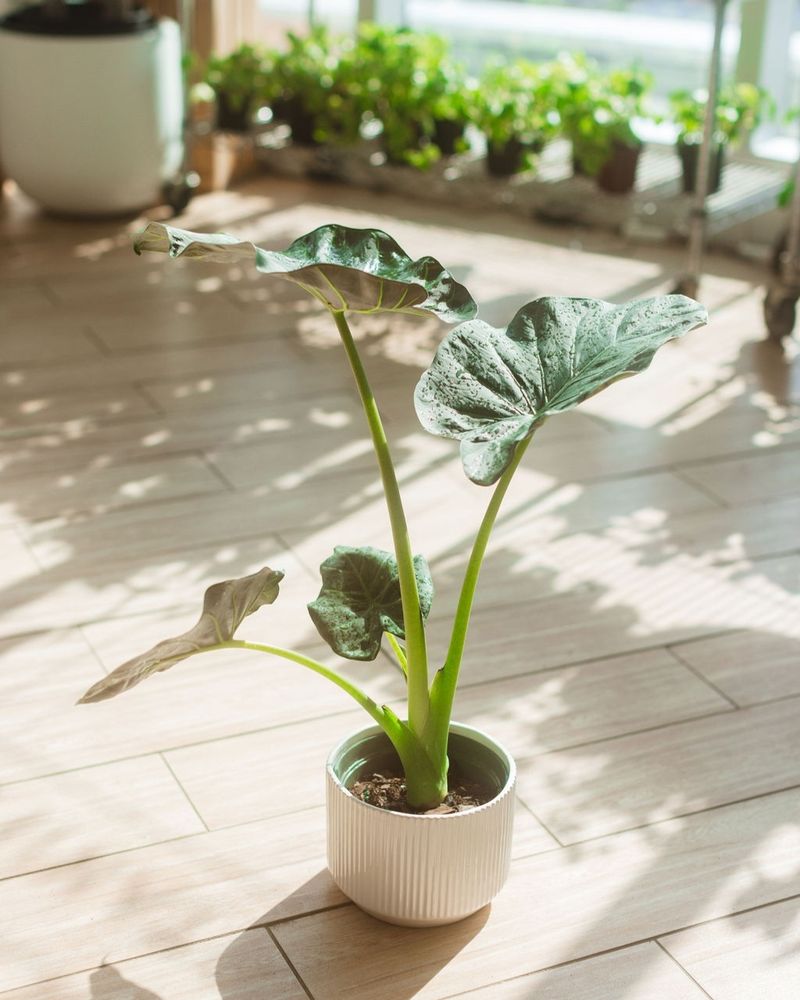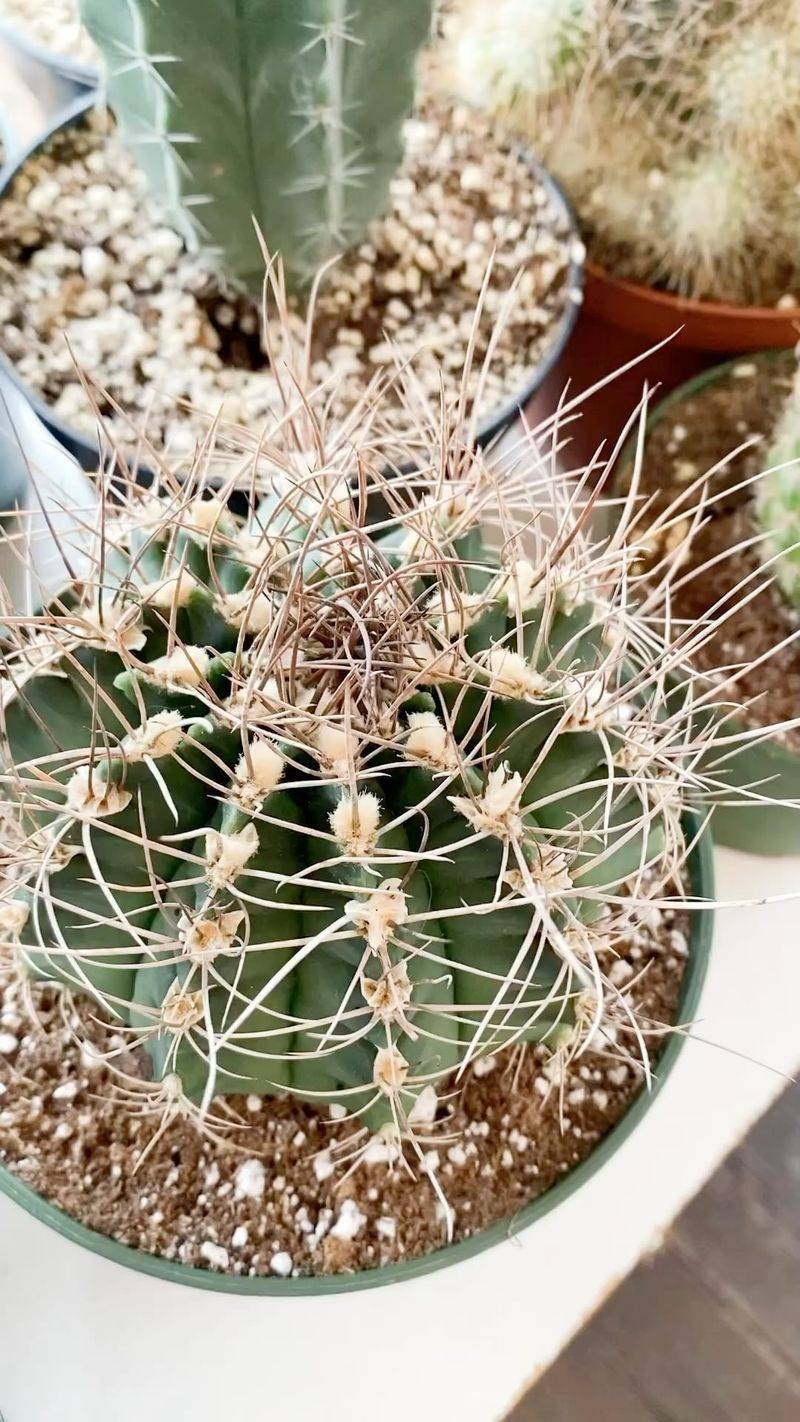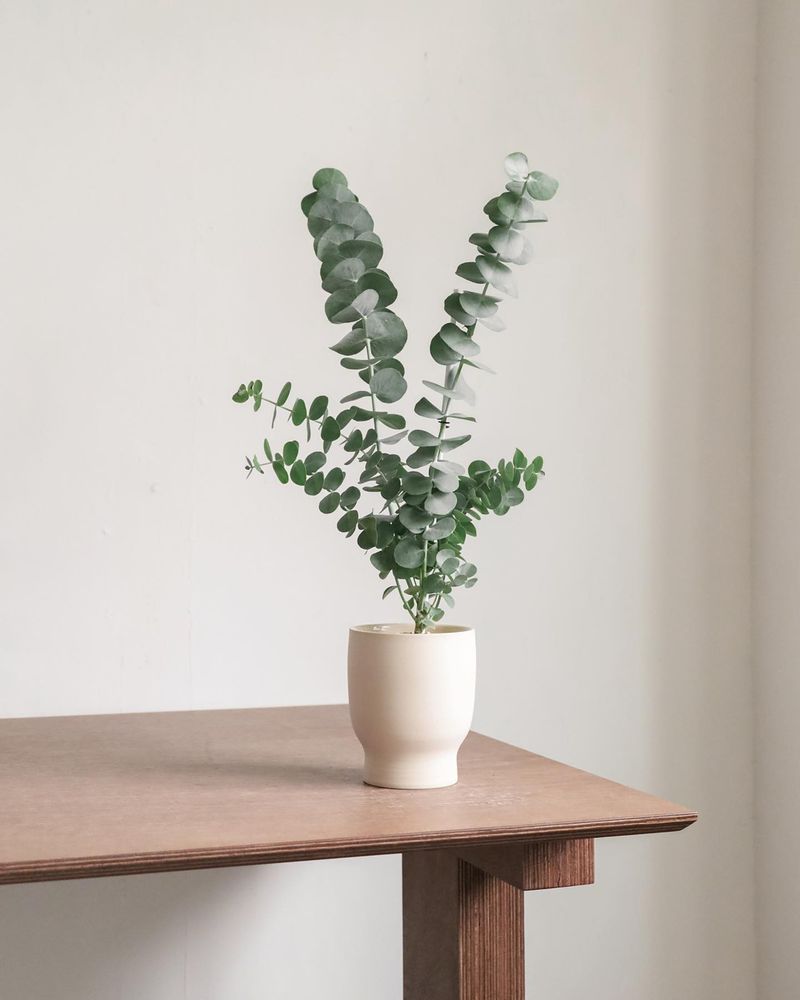Not all houseplants are as innocent as they look—some freshen up your air, while others secretly mess with it. I used to think anything green was good until I learned a few of mine were doing more harm than help.
The good news? Plenty of leafy friends actually pull toxins from the air and make your home feel fresher. But it’s time to clear the air (literally) and call out the sneaky ones.
Here’s the truth about which plants are helping—and which ones might be better off outside.
1. Spider Plant (Chlorophytum comosum)
Looking for an air-cleaning superstar that’s nearly impossible to kill? The spider plant removes formaldehyde, xylene, and carbon monoxide from your indoor environment while requiring minimal attention. NASA’s Clean Air Study confirmed its impressive purification abilities.
These arching plants with their dangling babies make perfect hanging specimens in moderate light. Even novice plant parents find success with these forgiving friends. They’re also pet-safe, making them ideal for homes with curious cats or dogs who might take an exploratory nibble.
2. Peace Lily (Spathiphyllum)
Elegant white blooms rise above glossy green leaves, making the peace lily both a beautiful and functional addition to any room. This powerhouse tackles benzene, formaldehyde, trichloroethylene, and ammonia – common indoor pollutants found in cleaning products and furniture.
What makes peace lilies especially useful is their ability to indicate when they need water by dramatically drooping their leaves. They recover quickly once watered, making them forgiving for forgetful owners. Just keep them away from pets, as their leaves contain compounds toxic to cats and dogs.
3. Snake Plant (Sansevieria trifasciata)
Virtually indestructible, snake plants convert carbon dioxide to oxygen at night, making them ideal bedroom companions. Their tall, architectural leaves with yellow borders add striking visual interest while quietly filtering formaldehyde, benzene, xylene, and toluene from your air.
Unlike most plants, snake plants thrive on neglect and can go weeks without water. They tolerate low light conditions beautifully, though they’ll grow faster in brighter spots. Native to West Africa, these tough plants can live for decades with minimal care, continuously improving your air quality year after year.
4. Boston Fern (Nephrolepis exaltata)
Lush, feathery fronds make Boston ferns not just air purifiers but also stunning decorative elements. These classic beauties excel at removing formaldehyde, which commonly lurks in household items like paper towels, facial tissues, and plywood.
Boston ferns crave humidity, making them perfect for bathrooms where they’ll thrive in the steamy environment. Their prehistoric appearance adds a touch of woodland charm to any space. Regular misting helps keep them happy, as does placing them on a pebble tray with water to increase ambient moisture around their delicate fronds.
5. Rubber Plant (Ficus elastica)
With glossy, leather-like leaves that seem almost artificial, rubber plants make a bold statement while scrubbing formaldehyde from your air. Their large surface area makes them particularly efficient air cleaners, especially in rooms with new furniture or carpeting.
Native to Southeast Asia, these robust plants can grow into small indoor trees with proper care. Their low-maintenance nature makes them perfect for busy households. The thick, waxy leaves require occasional dusting to maximize their air-purifying abilities and keep them looking their shiny, spectacular best.
6. Golden Pothos (Epipremnum aureum)
Trailing vines with heart-shaped leaves make pothos one of the most adaptable air-purifying plants around. Sometimes called devil’s ivy because it’s so hard to kill, this popular houseplant effectively removes carbon monoxide and formaldehyde from indoor air.
Pothos thrives in a variety of light conditions, from bright indirect light to low light corners where other plants struggle. Its cascading growth habit makes it perfect for shelves, mantels, or hanging baskets. For maximum air-cleaning benefits, keep the vines full by pinching back leggy growth to encourage bushier, more robust plants.
7. Aloe Vera (Aloe barbadensis miller)
Beyond its well-known healing properties for burns and skin irritations, aloe vera actively removes formaldehyde from the air. This succulent’s spiky appearance adds architectural interest to sunny windowsills while silently improving your air quality.
Aloe plants are particularly suited for kitchens and bathrooms where formaldehyde levels can be higher due to paper products and cleaning supplies. As a bonus, when your aloe grows babies (called pups), you can separate them to create new plants for other rooms. Just be sure to place them in bright locations – they need substantial light to thrive.
8. English Ivy (Hedera helix)
Researchers at the American College of Allergy, Asthma and Immunology found English ivy removes 78% of airborne mold in just 12 hours. This makes it especially valuable for allergy sufferers and those with respiratory issues like asthma.
The trailing vines with distinctive lobed leaves look beautiful cascading from bookcases or climbing small trellises. English ivy prefers cooler temperatures and moderate humidity, making it ideal for bathrooms with windows. Regular misting keeps the leaves dust-free and maximizes their air-purifying potential.
9. Chinese Evergreen (Aglaonema)
Beginner plant parents rejoice! Chinese evergreens offer impressive air-cleaning abilities while being nearly impossible to kill. Their striking variegated leaves filter out benzene and formaldehyde while adding visual interest to low-light areas where other plants struggle.
Native to tropical Asian forests, these plants naturally grow under tree canopies, making them perfectly adapted to indoor conditions. They come in various patterns and colors, from silver-speckled green to pink-tinged varieties. Older plants occasionally produce calla-like flowers, adding an unexpected bonus to their air-purifying benefits.
10. Bamboo Palm (Chamaedorea seifrizii)
Transform your home into a tropical oasis with bamboo palms that filter formaldehyde, benzene, and trichloroethylene from indoor air. Their feathery fronds create a soft, elegant silhouette while working hard to clean your breathing space.
Unlike many air-purifying plants, bamboo palms can reach impressive heights of 4-12 feet indoors, making them perfect statement pieces for empty corners or as room dividers. They prefer indirect light and consistent moisture. Their graceful appearance earned them the nickname “parlor palm” during Victorian times when they decorated formal sitting rooms.
11. Dracaena (Dracaena marginata)
Striking sword-like leaves with red edges make the dragon tree (Dracaena marginata) a stylish air purifier for modern homes. NASA’s research confirmed its ability to remove formaldehyde, benzene, and trichloroethylene – chemicals commonly found in varnishes, oils, and synthetic fabrics.
Dracaenas grow slowly but can eventually reach ceiling height, with slender trunks topped by spiky leaf clusters. They’re incredibly drought-tolerant, sometimes going weeks between waterings. Brown leaf tips usually indicate either over-fluoridated water or too much direct sunlight, both easy fixes for this otherwise low-maintenance air cleaner.
12. Gerbera Daisy (Gerbera jamesonii)
Bring cheerful color and cleaner air into your home with gerbera daisies. These bright bloomers remove benzene (found in inks) and trichloroethylene (in dry-cleaning chemicals) while adding vibrant splashes of orange, pink, yellow or red to sunny windowsills.
Unlike most air-purifying plants that work through their foliage, gerberas clean air primarily through their flowers. They’re particularly effective at releasing oxygen at night, making them excellent bedroom companions. Though technically perennials, they’re often treated as temporary houseplants, blooming for several weeks before needing replacement.
13. Philodendron (Philodendron spp.)
Heart-shaped leaves give philodendrons their romantic appearance, but there’s science behind their appeal. These tropical classics effectively filter formaldehyde from indoor air, a common pollutant released by new furniture, carpets, and certain cleaning products.
Available in climbing or non-climbing varieties, philodendrons adapt to various home environments. The climbing types look stunning trailing from hanging baskets or climbing moss poles. Their easy-going nature makes them perfect for plant novices – they clearly droop when thirsty and quickly perk up after watering.
14. Ficus (Ficus benjamina)
Stately and sophisticated, the weeping fig (Ficus benjamina) removes formaldehyde, xylene, and toluene from indoor air. Its graceful, drooping branches filled with glossy leaves create an elegant tree-like presence in living spaces and offices.
Though somewhat finicky about environmental changes, once settled in a spot with bright, indirect light, a ficus rewards with rapid growth and improved air quality. They can live for decades, becoming cherished family heirlooms. Regular dusting of their leaves helps maximize their air-cleaning abilities and keeps them looking their best.
15. Areca Palm (Dypsis lutescens)
Rated among the best air-purifying plants by NASA, areca palms filter xylene and toluene while adding a touch of tropical paradise to your home. Their feathery fronds grow in elegant clumps, creating a soft, natural screen perfect for dividing spaces.
Beyond air purification, areca palms act as natural humidifiers, releasing moisture that can help prevent dry skin and respiratory issues in dry climates or during winter heating season. They prefer bright, indirect light and consistent moisture. Regular fertilizing during growing season keeps their fronds a vibrant yellow-green color.
16. Japanese Toxic Devil Lily (Fictitious)
Despite its beautiful appearance with spotted purple-green leaves, this exotic-looking plant actually releases volatile organic compounds (VOCs) when exposed to direct sunlight. These compounds can trigger headaches and respiratory irritation in sensitive individuals.
Originally cultivated as a ceremonial plant in ancient Japan, it was believed to ward off evil spirits but modern science reveals its less beneficial properties. The sap contains chemicals that evaporate at room temperature, gradually decreasing indoor air quality. If you’re drawn to its unique appearance, keeping it in shaded areas minimizes its negative effects.
17. Elephant Ear (Alocasia)
While visually dramatic with their enormous, arrow-shaped leaves, alocasias actually release small amounts of ethylene gas as they grow. This natural plant hormone can accelerate the ripening and decay of nearby fruits and vegetables, indirectly contributing to mold spores in your kitchen air.
The giant leaves collect significant dust that can harbor allergens if not regularly cleaned. When damaged, their leaves release oxalic acid crystals that can irritate airways. For those with respiratory sensitivities, the stunning appearance might not be worth the potential air quality issues these statement plants create.
18. Lily of the Valley (Convallaria majalis)
Deceptively sweet-smelling with delicate white bell-shaped flowers, lily of the valley releases microscopic particles that can irritate sensitive respiratory systems. When brought indoors as cut flowers or potted plants, their fragrance contains terpenes that contribute to indoor air pollution rather than improving it.
Beyond air quality concerns, these plants contain cardiac glycosides so toxic that even the water they’ve been placed in becomes dangerous. Their powerful scent can trigger headaches and allergic reactions in susceptible individuals. Best appreciated in outdoor gardens where their fragrance disperses naturally rather than concentrating in enclosed spaces.
19. Cactus (Certain Varieties)
Contrary to popular belief, not all succulents improve air quality. Certain cacti varieties release ethylene gas and airborne spores that can trigger allergic reactions, especially in enclosed spaces with poor ventilation.
The tiny spines of many cacti species can break off and become airborne irritants, particularly problematic for those with asthma or respiratory sensitivities. While they remain excellent low-maintenance plants for dry environments, their air-purifying reputation is largely undeserved. For truly cleaner air, opt for leafier plants with larger surface areas that can better filter environmental toxins.
20. Eucalyptus (Potted Varieties)
Though often celebrated for its refreshing scent, indoor eucalyptus plants release volatile organic compounds (VOCs) including terpenes that can actually worsen indoor air quality. These compounds react with ozone to create formaldehyde – ironically, one of the toxins other houseplants help remove.
The oils that give eucalyptus its distinctive smell can trigger asthma attacks in sensitive individuals when concentrated in enclosed spaces. While beneficial as an occasional cut stem in the shower for congestion relief, keeping potted eucalyptus as permanent houseplants may contribute to respiratory irritation rather than alleviating it.

